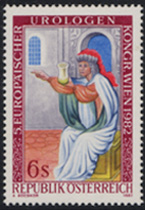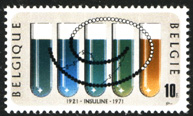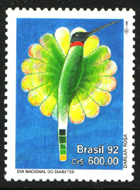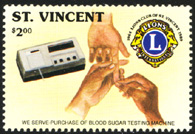


 Lions Club 25th
Anniversary in
St. Vincent. Blood
glucose monitoring
using a meter.
Blood glucose meter
is a big step
forward in the self-
monitoring of
blood glucose control
providing a
more accurate and
immediate feedback
than the urine
test. The prototype
was invented by Anton H. Clemens in the 1970s.
Lions Club 25th
Anniversary in
St. Vincent. Blood
glucose monitoring
using a meter.
Blood glucose meter
is a big step
forward in the self-
monitoring of
blood glucose control
providing a
more accurate and
immediate feedback
than the urine
test. The prototype
was invented by Anton H. Clemens in the 1970s.
Cataract is a common complication of diabetes indeed it has been estimated
that up to fifteen per cent of cataract surgery is performed on diabetics57.
The main indications for surgery are the same as for non-diabetic patients.
In addition, surgery is indicated if the lens opacity prevents an adequate
examination of the fundus or produces excessive scatter of light during laser
therapy. Standard surgical techniques are applicable eg. extracapsular
cataract extraction or phacoemulsification. with posterior chamber intraocular
flexible or non-flexible lens implantation. If phacoemulsification is performed,
it is advisable to perform a large capsulorrhexis with a 7mm optic lens, thus
allowing the better visualization of the fundus for PRP if required. Following
surgery, the incidence of capsular opacification is greater in diabetics than in
non-diabetics. Therefore, a large YAG capsulotomy to improve vision or
improve visualization of the retina may become necessary. The results of
surgery best in those eyes with no retinopathy and worst in those eyes with
active proliferative retinopathy58.
10.2 Complications of surgery
All forms of DR may become more severe following cataract surgery. In addition,
surgery may be followed by a stormy post-operative course, particularly in those
with active retinal disease. Complications include:
.
- severe uveitis with or without a ‘fibrin response’ in the anterior chamber..
- the development or progression of rubeosis iridis. In patients with
- vitreous haemorrhage in patients with active new vessels. If preoperative
- the development or worsening of active maculopathy. Evaluation and
.
existing rubeosis, this should be treated pre-operatively with panretinal
photocoagulation. If this is not possible, laser therapy should be
performed peroperatively or in the immediate postoperative period.
..
laser is inadequate or impossible due to poor visualization through the lens
opacity, peroperative laser therapy should be considered as for rubeosis.
If peroperative laser is not possible, then evaluation of the retina and
adequate laser treatment should be performed in the immediate
postoperative period.
.
treatment of the maculopathy should be carried out at an early stage in
the postoperative period. Patients with diabetes are at slightly greater
risk of cystoid macular oedema which may be difficult to differentiate
from true diabetic maculopathy. In cystoid macular oedema there is
normally leakage of dye from the disc on fluorescein angiography which
helps to differentiate the two conditions.
.
Cataract in patients with severe PDR or who require vitrectomy presents
special therapeutic problems. The use of red or infra-red wavelengths allows
laser photocoagulation to be delivered through many nuclear sclerotic cataracts.
Use of the laser indirect ophthalmoscope allows panretinal laser photocoagulation
to be delivered at the time of cataract surgery (see above for indications for
preoperative laser therapy). Post-operative laser photocoagulation can readily
be delivered either using the hand held 90D or 78D lens at the slit-lamp or with
contact lens after small incision (phacoemulsification) cataract extraction
techniques. It is worth re-iterating that patients with significant ischaemic
retinopathy or proliferative retinopathy may frequently require additional
panretinal laser photocoagulation preoperatively or in the immediate post-
operative period to prevent rapidly progressive neovascular glaucoma and
blindness.
.
10.3 Lensectomy and vitrectomy Patient with cataract and severe proliferative retinopathy (vitreous haemorrhage,
widespread proliferative retinopathy, traction retinal detachment) requiring
vitrectomy may undergo combined lens-vitreous surgery59. Cataract extraction
with intra-ocular lens implant is performed (either manual expression extracapsular
surgery or phacoemulsification cataract surgery), followed by a 3 port pars plana
vitrectomy with delivery of full panretinal laser photocoagulation using the endolaser.
Membrane dissection may be performed if needed60. In general, phacoemulsification
is the preferred procedure in lensectomy/vitrectomy when they are performed as
sequential procedures.
.
Alternatively combined pars plan vitrectomy and lensectomy, with preservation of
the anterior capsule, may be performed with pars plana delivery of endolaser.
Insertion of a posterior chamber sulcus-fixated intra-ocular lens anterior to the
anterior lens capsular, either a central anterior capsulotomy may be performed at
the same surgical session or at a later date.
.
..........